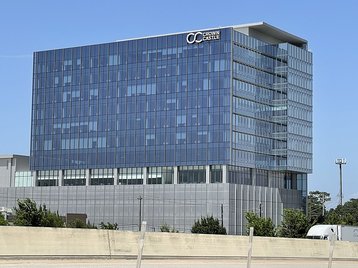Crown Castle has acknowledged that building new cell towers is a challenge for the company.
The business, which operates more than 40,000 towers, noted that it's become more difficult to build new infrastructure due to opposition from residents, while some municipalities don't want more telecom masts at all.
"It's generally because it's very difficult to build towers in addition to the ones that already exists in the US," said Daniel Schlanger, chief financial officer at Crown Castle, in an investors call last week.
"It's hard to build more because nobody wants them. They're ugly. Most people look at them and say, I don't want that anywhere near me. It's not in my backyard issue that most things like this are infrastructure as that negative to it. But if somebody already owns the infrastructure, that's a huge positive. And so it's difficult to build because municipalities don't want additional towers.
"The third party is the most cost-effective way to own tower infrastructure in the US, which is why all of the major carriers have sold towers to us and our peers and lease them back because the economics just make them more profitable."
Small cells
However, Schlanger did add that Crown Castle has identified small cells as an "avenue for growth in the US" for the business.
As the name suggests, small cells are much more compact than typical telecom towers which can be anything between 50-300 ft (15-91m). They are often located on existing structures, such as lampposts or buildings, and tend to blend in more discreetly than tower structures.
Crown Castle currently operates around 120,000 small cells on air or under contract to go on air.
"A small cell is typically on already existing street infrastructure like lampposts or street lights that are 25, 30 feet tall. The necessity of those smaller towers is because it's really hard to build towers, and these small cells enable this crush of demand to be satisfied by our customers," he said.
"And the densification of our network to smaller and smaller areas of operation is what's happened over time and small cell is just another example of just densifying the network and we've seen good demand for our small cells, which I'm sure we'll get into in this conversation that's given us another avenue for growth in the US that's been attractive for us."
Earlier this week, Crown Castle, reiterated its desire to push its small cells business, while also revealing cost-saving measures that will lead to office closures and job losses.
Consolidation impacts tower companies too
Schlanger also discussed the overall consolidation of the US telco market, which has shrunk to three major players, AT&T, Verizon, and T-Mobile.
The latter completed a merger and acquisition of Sprint in August 2020, with this deal set to impact Crown Castle next year.
"As part of that consolidation, we negotiated an outcome with Sprint and with T-Mobile, where all of the churn of our towers, all of the revenue reduction of our towers, they would get through rationalizing their network footprint would happen at the beginning of 2025," he added. "So we expect about $200 million of revenue to decrease to come off our books in the beginning of 2025.
"When we're done with that, we don't see any other additional consolidation churn that's anything meaningful nor do we think that there will likely be any further consolidation because the US government has said pretty clearly, they do not anticipate being - allowing any additional consolidation."
Last month Crown Castle won its proxy fight against its co-founder Ted Miller, who had been fighting for a place on the amid clashes over the company's operation.







